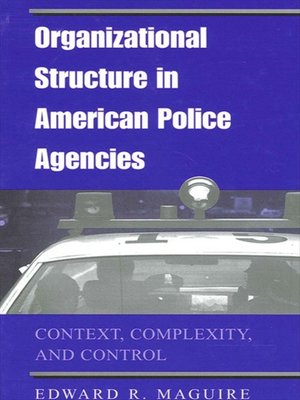Organizational Structure in American Police Agencies
ebook ∣ Context, Complexity, and Control · SUNY series in New Directions in Crime and Justice Studies
By Edward R. Maguire

Sign up to save your library
With an OverDrive account, you can save your favorite libraries for at-a-glance information about availability. Find out more about OverDrive accounts.
Find this title in Libby, the library reading app by OverDrive.



Search for a digital library with this title
Title found at these libraries:
| Library Name | Distance |
|---|---|
| Loading... |
A new theory accounts for the characteristics of individual police departments.
Although most large police organizations perform the same tasks, there is tremendous variation in how individual organizations are structured. To account for this variation, author Edward R. Maguire develops a new theory that attributes the formal structures of large municipal police agencies to the contexts in which they are embedded. This theory finds that the relevant features of an organization's context are its size, age, technology, and environment. Using a database representing nearly four hundred of the nation's largest municipal police agencies, Maguire develops empirical measures of police organizations and their contexts and then uses these measures in a series of structural equation models designed to test the theory. Ultimately, police organizations are shown to be like other types of organizations in many ways but are also shown to be unique in a number of respects.







